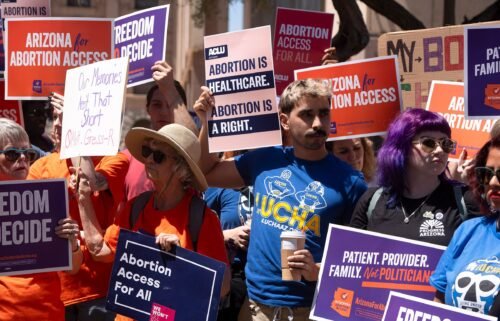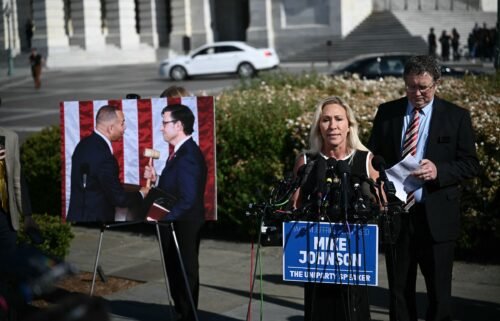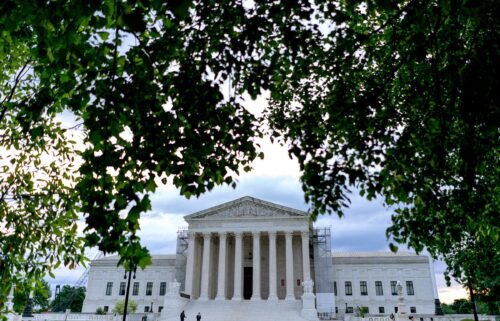The roadmap for Biden’s infrastructure plan goes back to 1956
On Wednesday, President Joe Biden will unveil an infrastructure bill during a visit to Pittsburgh. Estimates place the bill’s total cost between $3 trillion and $4 trillion.
While the scope and scale of the Biden plan may be unprecedented, the two-pronged infrastructure proposal is only the latest chapter in a long history of federal efforts to bind together the nation that began with the Federal-Aid Highway Act of 1956, popularly known as the National Interstate and Defense Highway Act, or simply the Eisenhower Interstate System.
For Biden to accomplish his own infrastructure goals, he should draw on the lessons from the passage and implementation of this system. Like Eisenhower, Biden will need to find a legislative path that satisfies Democrats — and potentially Republicans in Congress — and garners the widespread support of the American people. To improve the nation’s infrastructure for good, he must similarly build a system that will last beyond his time in office.
Infrastructural challenges have long occupied the thoughts of political leaders. As early as the 1930s, President Franklin D. Roosevelt recognized the need to build an interstate system. The Federal-Aid Highway Act of 1944 authorized the construction of a 40,000-mile “National System of Interstate Highways.” Yet the demands of World War II delayed the implementation of the plan, even as routes were laid out for the future highways.
The 1952 election of Dwight D. Eisenhower as president set the stage for a major change. As a young army officer, Eisenhower had experienced first-hand the difficulty in transporting convoys of vehicles across the country. During World War II, as Supreme Allied Commander in Europe, he noted how Nazi forces could move quickly across Germany using the system of autobahns. “The old convoy had started me thinking about good, two-lane highways,” he recalled in his 1967 memoir, “but Germany had made me see the wisdom of broader ribbons across the land.”
The political climate of the Cold War of the mid-1950s also brought a new will to act. In 1954, Eisenhower appointed General Lucius D. Clay — Eisenhower’s deputy during World War Two — to form a committee to consider how best to fund an interstate highway system. The committee’s report and the resulting bill contained a key phrase, notably that a highway system was “essential to the national interest.”
Nevertheless, Congress debated how to fund the proposed improvements, which were estimated to cost $27 billion. Fiscally conservative Democrats in Congress opposed using public bonds to finance the system. The eventual solution was to indirectly tax the users of the highways through a federal surcharge on gasoline set at 3 cents per gallon and soon increased to 4.5 cents per gallon. From there, excise taxes on highway-related industries such as tire rubber and auto sales further supported the interstate system. A Highway Trust Fund — based off the Social Security Trust Fund established in the 1930s — safeguarded the taxes collected.
Lawmakers also underscored that such national interest also included a commitment to “national defense.” The interstates could be used to transport military convoys across the nation, though contrary to popular opinion, they were not intended as runways to land military-grade aircraft.
Along the way, Eisenhower withstood lobbying efforts to eliminate the gas tax, thus preserving the key means to ensuring the system’s solvency. Although still recovering from surgery at Walter Reed Hospital, he signed the bill into law on June 29, 1956.
Future presidents continued the work begun under Eisenhower and confronted challenges of funding the system. Facing the expiration of a temporary increase on the gas tax, John F. Kennedy recommended making the raise permanent and added other excise taxes. In turn, Congress passed the Federal-Aid Highway Act of 1961 that provided for the interstate system for years to come. In 1966, Lyndon Johnson signed the U.S. Department of Transportation Act to create an agency to oversee government spending on infrastructure.
When declared complete in 1992, the National Interstate and Defense Highway Act had led to the construction of more than 46,000 miles of roads. Costing $129 billion, the system provided for road maintenance until 1981, when states began to receive funds to do the same. Along the way, Eisenhower’s signature contribution was not forgotten. In 1990, President George H.W. Bush renamed the system in honor of Eisenhower.
The economic and social benefits of the highway system have reverberated across the generations. A report from 1996 pointed to a return in economic productivity of more than six times the original amount spent, enhanced international security, and greater personal mobility for Americans. With interstate highways suddenly available, the great American road trip was born.
At the same time, unintended consequences have followed from the decades’ long project. Motor vehicle accidents are a leading cause of death among Americans under age 55. Highway funding became a wedge in which the federal government — encouraged by the group Mothers Against Drunk Driving — essentially forced all states to raise the legal drinking age from 18 to 21. The ambitious system constructed arteries through urban zones that have proven particularly harmful to communities of color, leading to highways being torn down or relocated. Critics further point out that privileging auto transportation set back investments in public transit for a generation and contributed to increased air pollution.
The Biden infrastructure plan features many items we have come to expect. The bill will support upgrading roads, bridges, and airports. In addition, money will be poured into schools and will upgrade the nation’s broadband and energy infrastructure. However, Biden’s plan calls for a second, more controversial package to support “social infrastructure,” or the “care economy.” This second bill includes funding for universal pre-K, childcare programs, elder care, and free community college among other provisions.
As in the 1950s, the funding of Biden’s infrastructure plan remains an open question. Despite earlier suggesting its promise, Transportation Secretary Pete Buttigieg has indicated that neither a mileage tax, which would charge people based on miles driven, nor an increased federal gas tax, unchanged since 1993 at 18.4 cents per gallon, will be included. Instead, the administration plan raises the corporate tax rate to 28% (up from its current level of 21%), ends federal subsidies for fossil fuel companies, and imposes taxes on multinational corporations operating in the US.
Whereas the National Interstate and Defense Highway Act enjoyed near-unanimous bipartisan support, the political fate of Biden’s infrastructure bill is less clear. In the face of Republican opposition, Senate Majority Leader Chuck Schumer has lobbied the Senate parliamentarian to permit the use of budget reconciliation — used to pass the Covid relief bill without the need for any Republican votes — for an unprecedented second time in one fiscal year. Such a move may well be necessary if existing Senate rules on the filibuster are preserved.
Whatever this infrastructure bill’s final form, the battles over highways in the 1950s reveal the critical importance of presidential leadership. Without Eisenhower’s support, the interstate highway system would not exist in its present form. But the support of future administrations — both Democratic and Republican — ensured the long-term viability of the interstate system long after Eisenhower had left office.
During the 2020 election campaign, Joe Biden campaigned to “Build Back Better,” with his infrastructure plan lying at the heart of this promise. As it has been in the past, the road ahead will almost certainly be rocky. But if Biden can achieve his goals of funding the nation’s physical infrastructure and social infrastructure, he will have laid the groundwork for a lasting system worthy of his name.




